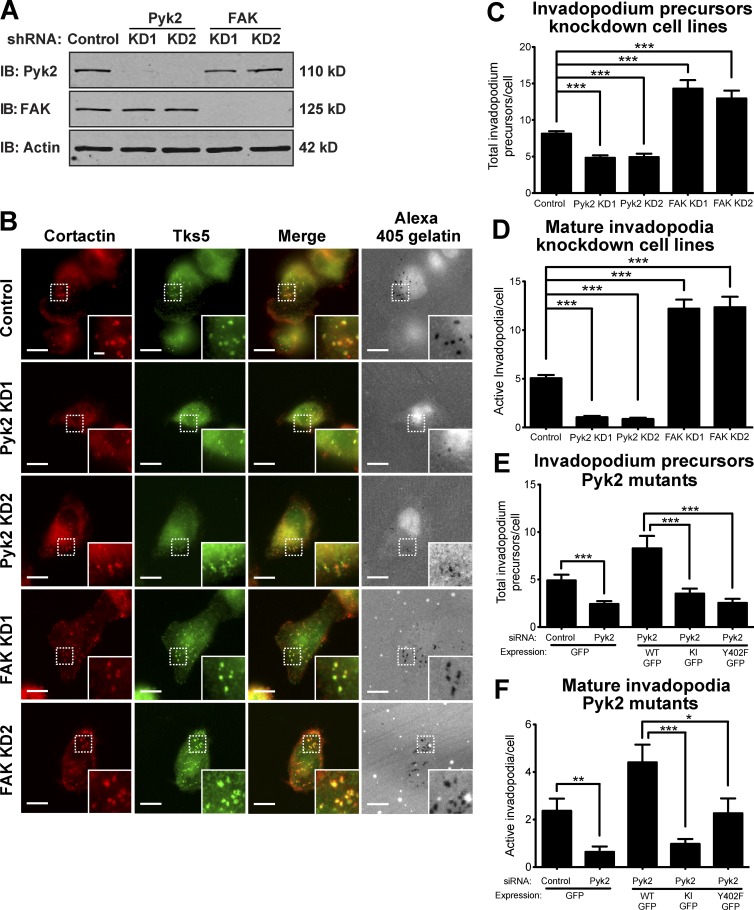Figure 4.
Pyk2 and FAK oppositely regulate invadopodium precursor formation in breast cancer cells. (A) Representative immunoblots (IBs) of MDA–MB-231 cells stably expressing control, Pyk2, or FAK shRNA. Whole-cell lysates were blotted for either Pyk2 or FAK and for actin as loading controls. (B) MDA–MB-231 cells stably expressing control, Pyk2 shRNA, or FAK shRNA were plated on Alexa Fluor 405 gelatin, fixed, and labeled for cortactin (red) and Tks5 (green). Boxed regions and insets depict colocalization of cortactin and Tks5 as markers for invadopodium precursors with Alexa Fluor 405 gelatin as a marker for mature invadopodia. Bars: (main images) 10 µm; (insets) 2 µm. (C and D) Quantification of invadopodium precursors defined by colocalization of cortactin and Tks5 (C) as well as mature (active) invadopodia, defined by colocalization of cortactin and Tks5 with degradation regions (D). n = 44–262 cells per group from three independent experiments. (E and F) Quantification of invadopodium precursors (E) and mature invadopodia (F) from cells expressing WT Pyk2-GFP, kinase-inactive (KI) Pyk2-GFP, or Y402F-Pyk2 GFP. n = 42–73 cells per group from three independent experiments. *, P < 0.05; **, P < 0.01; ***, P < 0.001. Error bars represent SEM.

